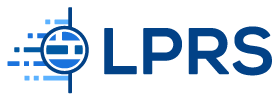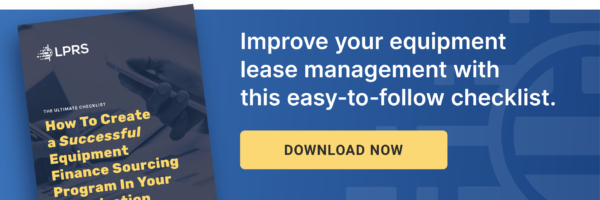How To Create a Successful Equipment Finance Sourcing Program In Your Organization
Okay, so you’ve not only learned how to uncover the unnecessary risk and hidden costs in your existing Master Lease Agreements (MLAs) but you’ve also learned how to fix those leases using the Ultimate Master Lease checklist. Congrats! But we’re here again to bring you to the next step.
It’s never enough to just know how to do something, you must have processes in place to ensure actions are completed so that your corporation is put in the best position for financial success. Especially as today’s climate of increased demand for capital is more than ever pushing you to choose leasing to finance your organization’s equipment needs, it’s important to have a process in place for full visibility and accountability.
Below are the key elements to include in a successful equipment finance program:
- Create a team
Centralize the responsibility for the program in your finance, treasury, procurement, and legal departments - Create guidelines for all types of structures
Establish guidelines that cover different financing structures (rentals, leases, per-use agreements, bundled services agreements, etc.), equipment types and overall cost, and ultimately, establish an approval process - Create a defined process
Create the program with specific roles and descriptions, steps to implement and who will implement specific tasks, and define measurables to performance over time
Let’s go into some more detail.
Centralize Equipment Sourcing
Centralizing the process, with each person on the org chart playing specific roles at different stages, will establish a clear chain of command and a consistent protocol within your company when it comes to servicing your equipment needs. Benefits:
- increased visibility and control over your bottom line
- efficient and quick implementation of decisions
- proactive approach to obtaining equipment
To Lease or not to Lease
You need to provide your organization with general guidelines to assist in the decision to either lease or purchase outright with capital. The guidelines should take into account the cost and type of equipment and the reason for obtaining it.
- First, define the types of financing arrangements that need to be considered. To avoid substantial financial risk, best practices call for including rentals, leases, per-use agreements, bundled services agreements and other strategic relationships that include a term commitment within the structures to be managed. Require that finance structures be submitted to the centralized team for approval.
- Second, we recommend establishing a minimum threshold for the original cost of equipment, above which all acquisitions will be financed through leasing. For some companies, this threshold could be $500,000, for others—it could be $100,000. Make sure that the threshold matches your company’s financial goals.
- Next, you should consider the type of equipment you should lease and the best structure. Best candidates for FMV leases are rapidly depreciating assets, such as pumps or other medical equipment, or assets with short useful lives that you’d like to return and upgrade at the end of the lease term, such as computers or mobile phones. Any other asset for which spreading payments would be useful could be leased successfully, provided your lease documents are customized for the assets’ useful life and other parameters.
Take into account your company’s changing needs when deciding whether to lease or buy. In general, leasing is helpful both:
- As part of the regular capital planning process for ongoing programs
- For ad hoc or emergency equipment needs, in cases where you need to replace broken equipment or need emergency upgrades and/or special configurations.
Finally, develop a list of approved lessors with negotiated terms and conditions to their MLAs as required for use for any lease. And again, ensure the centralized team is approving all options at the end of term for each lease.
Equipment Sourcing Program Elements
Now that you’ve set your organization up for a successful equipment sourcing process, what would that look like? The major elements include:
- Lease planning
- Lease sourcing
- End of lease management
- Performance measurement and continuous program improvement
Equipment Lease Planning
At the beginning of the process, your centralized team needs to develop the equipment lease plan, taking into account the initial guidelines and the projected annual spend and lease volumes.
Sourcing: Vendor Selection and Structure Negotiation
Negotiate low-risk equipment leases and select preferred vendors. Most scalable equipment finance programs include:
- financing arm or partner(s) of key strategic equipment vendors,
- banks that provide other sources of capital,
- and independent lessors that can finance many types of equipment.
Select vendors from each category after negotiating the best outcome. Identify these finance sources as preferred finance vendors for the appropriate asset types.
End of Lease Management
Your negotiated MLA terms and conditions require your lessor to notify you of when you need to notify them of your decision at the end of the lease. The appropriate internal stakeholders need to determine the best end-of-lease decision based on your company’s equipment needs and an analysis of the financial performance of the full all-in cost for concluded leases. This recommendation must be brought to the centralized team for final approval.
Performance measurement and continuous program improvement
Annually, compile the financial performance data for each lease that has come to conclusion and evaluate the total cost of the program by vendor. Use this analysis to negotiate contractual and process improvements with the lessor(s) and to reevaluate all elements of the program guidelines and process.
Following these steps, you are armed with the keys to a successful equipment leasing process for your organization, and we, at LPRS, are here to support you 100% of the way.
Download our checklist today for an easy-to-follow checklist version of this information to consistently refer back to.

